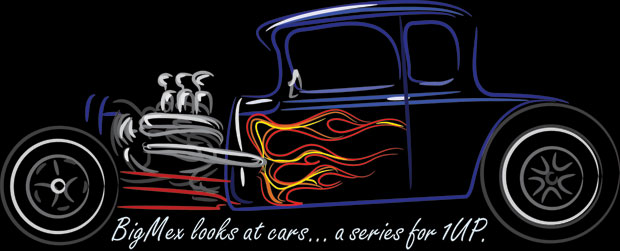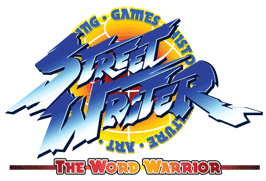Demolition Derby released in 1984 by Bally Midway was probably the most overlooked arcade game that I played. It was liked only slightly more than Stocker in the arcades. The game was in an overhead format and, like Hot Rod, played on a tabletop cabinet with multiple controllers. Demolition derby is an American institution. While this nation prides itself on creating hot rod culture, muscle cars and a great racing legacy, we are also known to go into fits of excess and nonsense. Demolition derby was the latter. The point of the game, just like the actual sport, was to smash into your opponents car and disable them. It's the car equivalent of the gladiator, the last one running was the winner.
The cars weren't ever new, most were fixed-up from a junkyard just a day or two before the derby. They were big, ugly, boxy American cars with poor steering and solid motors. Their appearance being part of their charm. The derbies themselves were slow and methodical. Like watching two grizzled boxing veterans fighting on the last round. Neither was pretty and neither had anything left to give. The best they could do was trade hits until one went down. The cars line in the derby against each other, as many as a dozen at a time, like enormous football players. The drivers usually went in reverse so as not to damage the engine and steering.

All of this carnage and brutality was recreated in the Bally Midway game. Players would last longer if they went in reverse and aimed for their opponents front. Wrenches could be picked up along the way to give cars more life. Good opponents, or the enemy AI on latter levels, could make the game grind on for a while. The winner was the last car moving. I kind of miss the reckless experience of crashing into cars in that format. Thankfully there was a modern series that combined the elements of Demolition Derby with the high speed hijinks of Chase H.Q.

Criterion Games smash-hit (no pun intended) driving game Burnout made its debut in 2002. After a few sequels, the addition of downloadable content and a global fan base it is safe to say that the series is going to be around for a long while. Burnout was one of those titles that made me glad my brother got an Xbox 360. The slow and ugly cars from Demolition Derby were nowhere to be found here. The Burnout cars were high speed racers very much based on legendary vehicles, sporty hot rods, muscle cars, race cars and trucks from real life. All of them were changed just enough so that no major auto maker, or movie studio, had to be compensated.
Burnout succeeded because it tapped into several themes of the racing genre often overlooked by publishers. It was an arcade racing experience at the core, not a traditional console racer. The sense of speed was very dramatic, the flowing track layouts helped bring that experience home. Cars flew all over the levels and took turns and jumps without losing much, if any, momentum. Players were never bogged down with a sim experience. There were no gear ratios, transmission or tire selections to worry about. The player simply had to point the car in a direction and then hammer on the gas. Any secrets, shortcuts or unlocks they found along the way to first place were a bonus.

The game could be very forgiving to those that never grew up on arcade racers. It was written for the generation that grew up on the gamepad rather than the steering wheel. The purpose of the main races was not only to come in first but to also damage the opposition as much as possible. You could run rivals into oncoming traffic, push them off bridges or slam into them demolition derby style. The experience of racing was similar to Chase H.Q., only without the badge. Everyone in the race deserved to be taken down. I have yet to come across a player that didn't revel in the experience that Burnout offered. When you added the different modes and online ability of the recent versions then you can see how gamers, and not solely racing fans, would want this title in their collection.

As much fun as Burnout was there still is only one driver that I enjoyed far more than it. A game whose content offered even more action, violence and impossible stunts than Burnout, Demolition Derby, Chase H.Q. and Mad Gear combined. I hope to see you back for that, oh, make sure you buckle your seat belts.

